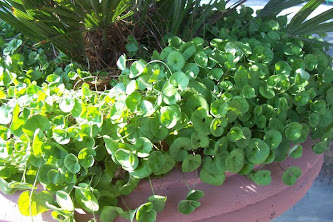Fertilising and Pruning
Fertilising
Citrus are high feeders and love fertiliser. In many books you will read, fertilise your citrus twice a year. We have a different opinion. “A little bit - often” is our philosophy. Therefore feed your citrus at least four times per year. Timing is not critical, if you haven’t feed your tree for a while, start now. There are many different commercial citrus fertilisers on the market. We generally don’t recommend these fertilisers as their instructions are often difficult to comprehend,
eg. X kilograms per age of tree.
There is nothing quite like, good old fashioned blood and bone or well rotted chicken manure or cow manure or ‘Organic Life’ or ‘Dynamic Lifter’. Any of these are fine and it’s a good idea to alternate between them. Water your tree well; remove any mulch from around the tree. Spread the fertiliser evenly around the soil underneath the
canopy, but not directly against the trunk. The amount varies, depending on which fertiliser you choose. Don’t be afraid, you can use up to half a bucket, per tree of organic fertiliser. Generally the organic fertilisers are less harmful if you accidentally overfeed. When all else fails, read the instructions on the bag. There is no need to cultivate the fertiliser into the soil as this will only cause damage to the surface roots. Water in well and then replace the mulch.
Citrus in pots also require regular feeding. Fertilise at least four times per year. Either ‘Organic Life’ or ‘Dynamic Lifter’ is great; put a light covering over the entire surface of the pot. If these products are a little too smelly, you can use ‘Osmocote’ or ‘Greenjacket’ slow release fertilisers.
Pruning
Citrus unlike many other fruit trees don’t require annual pruning to aid in fruit production. They can be happily left for
many years unpruned and will still produce an abundance of fruit.
Alternatively, citrus can be pruned into any shape that is desired. Citrus are often trained and pruned into Standards, for a formal topiary effect. Planting citrus close together and regular pruning can form a lovely dense fruiting hedge. Citrus are very adaptable and can be trained and pruned into many shapes only limited by your imagination.
Australian Cumquat pruned as a Standard
Espaliered Citrus are becoming very trendy for the smaller gardens or balconies. An espalier is when the citrus is pruned and shaped flat against a wall or lattice. All varieties of citrus are suitable and it is simply a case of tying the new growth back against the wall, fence or lattice and pruning off, any forward growth that can’t be tied back, creating a flat two dimensional plant. This saves space, creates a beautiful green wall and the citrus still produce an abundance of fruit.
Kaffir Lime trained as an espalier
Old, neglected, citrus can be resurrected by a heavy rejuvenation prune. If the tree is old and ugly and hasn’t fruited well for years attack it with a chain saw, taking it right back to the main fork. This sounds drastic, but the tree was useless as it was, so you have nothing to lose. As it starts to re shoot, fertilise well and water regularly. Most often the tree with comeback better than ever and continue producing fruit for many more years.



 Dichondra repens: is a member of the Convolvulaceae family and is known as Kidney Weed. This is an unfortunate common name. Although the leaves are kidney-shaped it is not a weed but a useful Australian native plant.
Dichondra repens: is a member of the Convolvulaceae family and is known as Kidney Weed. This is an unfortunate common name. Although the leaves are kidney-shaped it is not a weed but a useful Australian native plant.